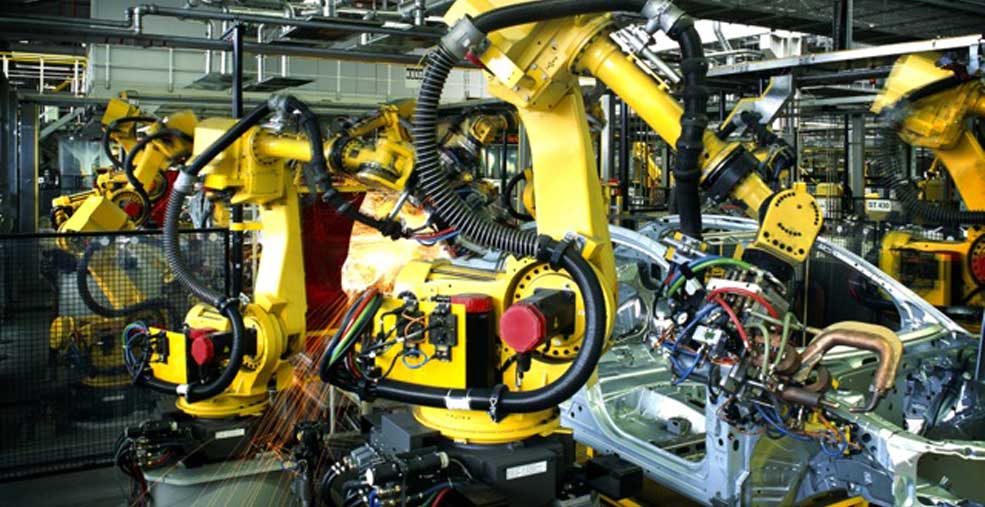Industrial Automation Trends in the Industry 4.0 and IoT era
Industry 4.0 is reshaping manufacturing in the same way that Amazon transformed retailing. The initiative seeks to drive manufacturers and machine builders to integrate all machine automation and machine controller information. By doing so, machine builders can discover new information-based products and identify opportunities to build smarter factories capable of automatically taking corrective or optimizing actions.

To support the trends, all manufacturing industries are undergoing digitization programs due to rapid advancement in industrial automation. 2019 witnessed a major shift towards digital transformation in the industry and 2020 will only accelerate the adoption of IIoT and Industry 4.0 concepts that demand digitization. Companies are embracing these new concepts because they drive down the operational costs, improve process efficiencies, and enable the fast development of new digital services and products for the customers. The trends indicate that the rapid digitization of industry will force the adoption of a razor-sharp focus on cost management.
Finally, it is clear that IT and OT (operational technologies on the shop floor that include machine automation) requirements are converging. IoT is the force that needs IT and OT to work together. In the 1980’s Sun Microsystems change the game with the tag line – The network is the computer. The fact of the matter is that this concept is even more true today for Machine Controllers. These devices now must include cloud computing to support IT requirements and digital fieldbus technologies like EtherCAT, GigE vision and TSN (Time Sensitive Networks) to support OT requirements. In sum, IT and OT must converge to support ground-breaking innovation with IoT and Industry 4.0, and it is exactly these trends that are driving new product opportunities for RTX64 and for KINGSTAR.
TRENDS IN MANUFACTURING AUTOMATION
The automation of manufacturing processes is at a turning point. The introduction of a process-specific approach will surely result in increase of operational efficiency. The digital revolution of manufacturing and business processes with different functions has been refined over the years. The functions include:
- Supply Chain
- Accounting
- Procurement
- Business Intelligence
- Distribution Management
- Human Resources
- Customer Services
Here are the trends for 2020 –
Rise of Simulation in Manufacturing
It will ensure quality improvement and flexibility. Modeling and simulation at the design stage will reduce costs by cutting the need for prototypes & testing.
Motor Drives
It is becoming the frontline of IIoT and predictive maintenance. The smart sensors on the motor allow information communication to be transmitted to a future where advanced software algorithms are able to predict the failures.
Cobots in Manufacturing
Collaborative robots are the new fast-growing technology that is looking after automation and flexibility in manufacturing. The revenues for cobots will continue to rise exponentially and will play a major part in industrial growth.
TRENDS IN IT AUTOMATION
The age of automation has arrived with a bang! New developments in AI (Artificial Intelligence) and ML (Machine Learning) are influencing change management strategies in the industry. The tools are transforming the business processes and thus, it is worth examining the current impact of the trends.
Robotic Process Automation
RPA is delivering a tremendous boost to efficiency and productivity by automating tasks with automated software tools. It is helping companies reach new productive heights and utilize human resources far more effectively.
Big Data Optimization
It is allowing businesses to utilize data more effectively and allowing them to react to market changes quickly. The smaller companies are able to access the same powerful analytical resources available to large-size organizations.
Holistic Automation
The IT business automation trends prove to be ad hoc and sporadic, rolled out across an organization in a holistic way to leverage the true potential of automation technology. The potential of big data will be combined with process automation tools to maximize employee potential.
Conclusion
The importance and the demand for breakthrough IoT and Industry 4.0 automation technology will continue to accelerate throughout 2020 and the following years. The ability of smart industrial to use computation at the edge and in the cloud will be an important requirement in the industrial sector. As such, IT and OT automation must work together to achieve the goals of IIoT and Industry 4.0, so companies are becoming more creative in the way they are applying the automation tools to their infrastructure & services.